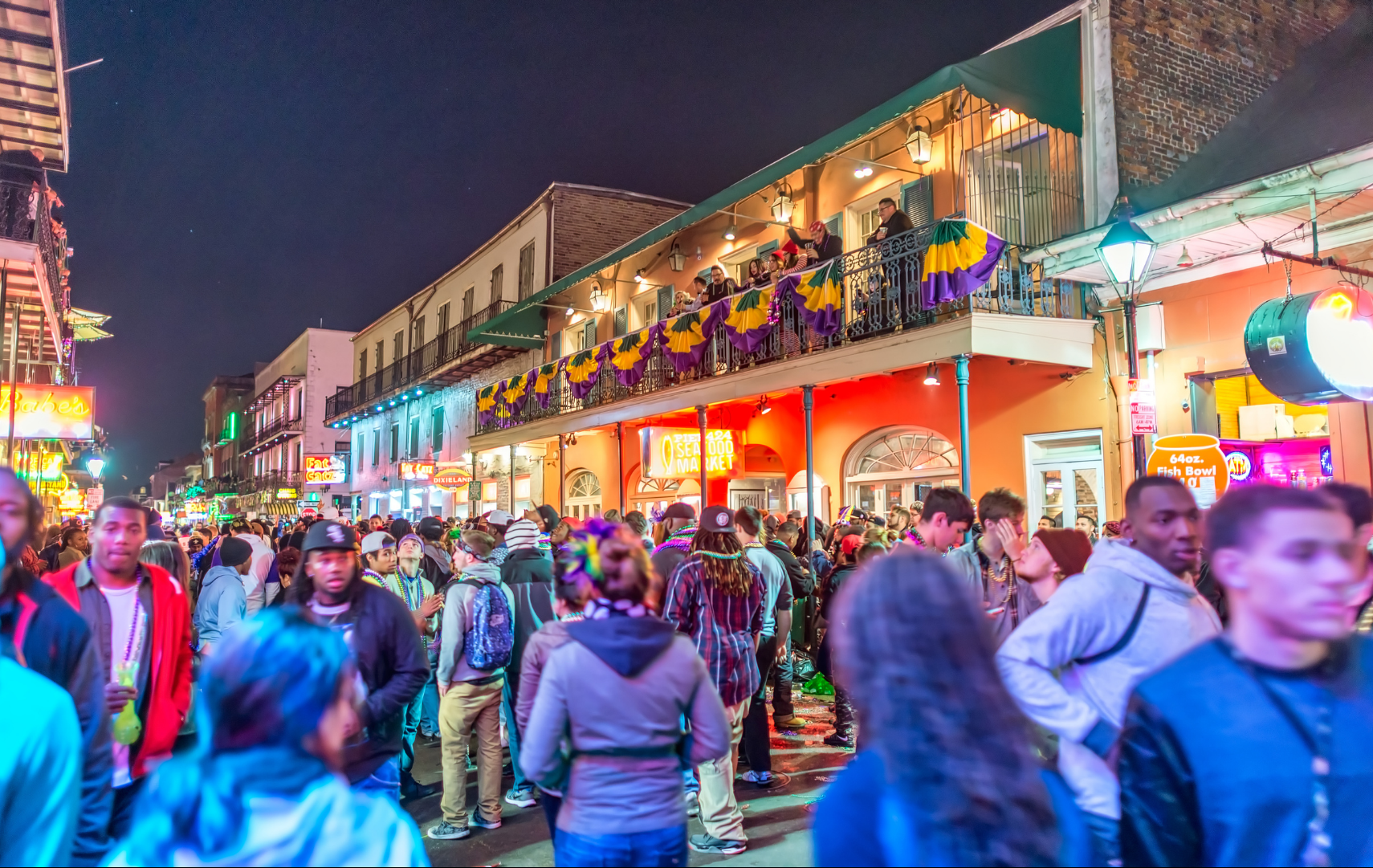Mardi Gras
DATE
Annually on or before Ash Wednesday
Celebration is approximately two weeks before and through Shrove Tuesday, beginning on or after the Christian feasts of the Epiphany and ending on the day before Ash Wednesday
Dates vary, but typically it falls in February and is always scheduled 47 days preceding Easter
HOLIDAY TYPE
Cultural and religious holiday (Christian)
OBSERVED BY
Celebrated worldwide
Several countries celebrate similar cultural festivities: Fasching in Austria and Germany, Carnival in Brazil, Masopust in the Czech Republic, Carnevale in Italy, Fettisdaen in Sweden, and Frasnacht in Switzerland.

CUSTOMS & TRADITIONS
Rich in traditions, Mardi Gras celebrations are about fun, excitement, and revelry. This notorious festival goes on for roughly a week or two with parades rolling through city streets complete with floats, marching bands, jazz music, dancers, and performers. New Orleans, Louisiana is home to the most famous Mardi Gras in the United States.
Homes and streets are lavishly decorated. Mardi Gras official colors are purple representing justice, green which stands for faith, and gold indicating power.
In New Orleans, social clubs, known as Mardi Gras krewes, host balls, parties and parades. Elaborate costumes are worn adorned with the beads caught from previous celebrations. Some wear masks and some paint their faces. Krewe of Rex and Krewe of Zulu are the two best known krewes. Most krewes select a royal court consisting of a king, queen, dukes and maids. King Rex, considered the King of Mardi Gras, leads the festivities.
Beads and doubloons (coins featuring krewes emblems and founding dates on one side with the current year and parade theme on the other) are popular trinkets thrown from floats and balconies on the streets of New Orleans. Prized krewe throws include hand decorated Muses shoes, Nix purses, Rex doubloons, and Zulu coconuts.
A colorful tradition is the Mardi Gras Indians and their elaborate feather suits, which feature intricate beadwork, rhinestones, and bright plumes. Mardi Gras Indian culture is influenced by the friendship forged between African Americans and Native Americans, who helped shield runaway slaves. African Americans formed Mardi Gras Indian tribes in the 1800s after being excluded from parades and krewes. They created their own celebrations known as Carnival. Today, there are over 40 tribes in New Orleans.
TRADITIONAL FOOD & DRINKS
TRADITIONAL FOOD: Creole and Cajun dishes like jambalaya, gumbo and red beans and rice. Hurricane cocktails made of rum, lemon juice and passion fruit syrup served in tall, curvy glasses by the same name are popular drinks in New Orleans, LA.
King cakes (also known as a three king’s cake) are oval pastries decorated with icing in all three Mardi Gras colors. Some are filled with fruit, cream cheese, or pecans. Most have a plastic baby (fève) hidden inside. The baby represents the Christ Child. Tradition dictates that the person who finds the baby must buy the cake next year and/or host next year’s Mardi Gras party.




HOLIDAY HISTORY
The French words Mardi Gras mean “Fat Tuesday,” and marks the 40-day fasting season between Ash Wednesday and Easter. The name reflects the last night of eating rich, fatty foods before Lent begins. It is also known as Shrove Tuesday, which is associated with the sacrament of confession and absolve, or Pancake Tuesday.
Some believe Mardi Gras to be linked with the ancient Roman pagan celebrations of spring and fertility which dates back to 133-31 B.C.
Mardi Gras arrived in North America as a French Catholic tradition with the Le Moyne d’Iberville brothers, Pierre and Jean-Baptiste, in 1699. King Louis XIV sent the pair to defend France’s claim on the territory of Louisiana. On the eve of the holiday, they landed in America and dubbed it the “Point du Mardi Gras.”
By the 1730s, wealthy members of Creole society in New Orleans threw opulent affairs from the Twelfth Night, January 6, to Fat Tuesday Eve. The first recorded New Orleans Mardi Gras parade was held by the Krewe of Comus in 1857. King Rex made his debut in 1872.
In Mobile, Alabama, the French held a type of Mardi Gras celebration as early as 1703. A mystic society, Boeuf Gras Society in Mobile, AL, hosted a parade down Dauphin Street in 1711.
Originally, flaming torches, called flambeau, lit the way for parade floats at night. Now, if used, flambleaux carriers entertain and dance with torches.
Today, Carnival is celebrated in several U.S. cities, such as Lafayette, Lake Charles and New Orleans, Louisiana; Orlando and Pensacola, Florida; Mobile, Alabama; Galveston, Texas; St. Louis, Missouri; and San Diego, California.


